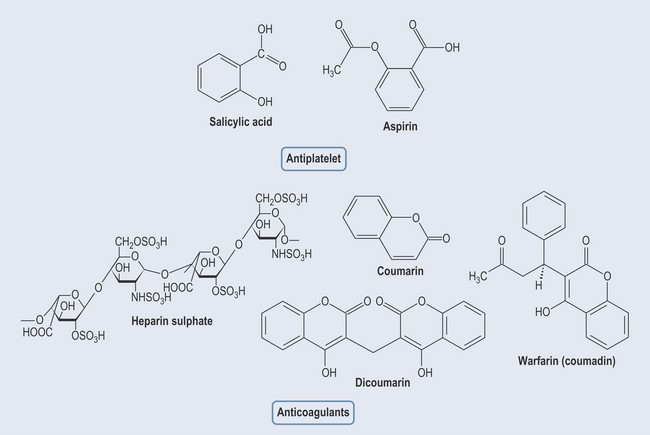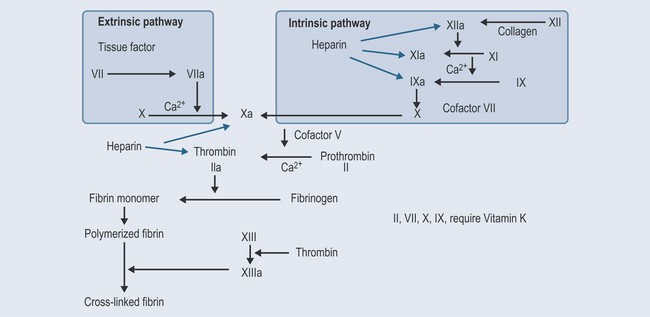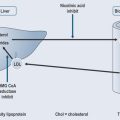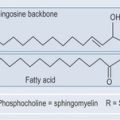Chapter 28 Blood disorders
Red blood cells (erythrocytes) perform two functions:
Anaemias
Iron-Deficiency Anaemia (Microcytic Anaemia)
For reasons for iron deficiency, see Chapter 13 ‘Vitamins and minerals’ (p. 97).
Pernicious Anaemia
Leukaemia
Abnormal growth of the cells in the bone marrow that develop into white blood cells.
Treatment
Treatment
• Underlying Cause Porphyria
Haemostasis
Haemostasis (the arrest of bleeding) occurs because of the creation of an abnormal environment in the blood vessels.
Normal Events in Haemostasis
• The Different Pathways Involved in Clotting
Two different pathways are involved in the clotting cascade (Figure 28.1):
• Formation of a Thrombosis
A thrombosis is a blood clot in the wrong place. A thrombosis forms due to:
Antiplatelet Drugs
Antiplatelet drugs are preferred to anticoagulants as they are less likely to cause excess bleeding.
Aspirin

Figure 28.2 Various haemostatic medications, demonstrating the natural derivatives of modern medications.
• Adverse Efects
Note: this applies to herbs and foods containing salicylates.
Note: it is not a good idea to give aspirin to some one with a disease such as haemophilia or any type of sickle-cell anaemia. Omega 3 fish oils are also considered a problem in these cases.








